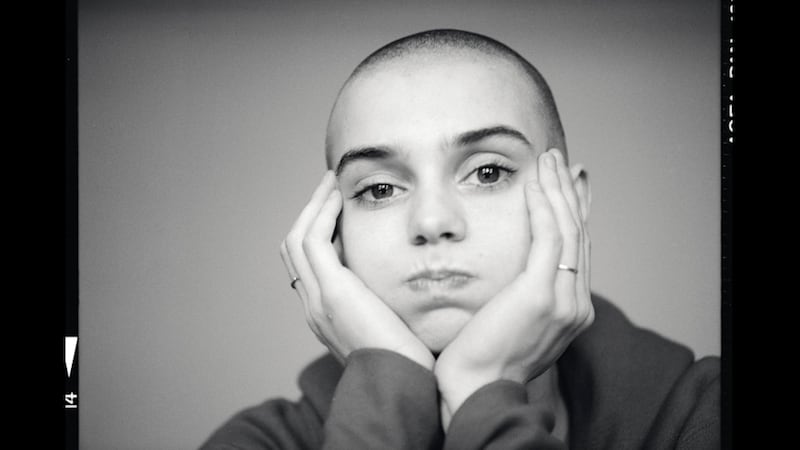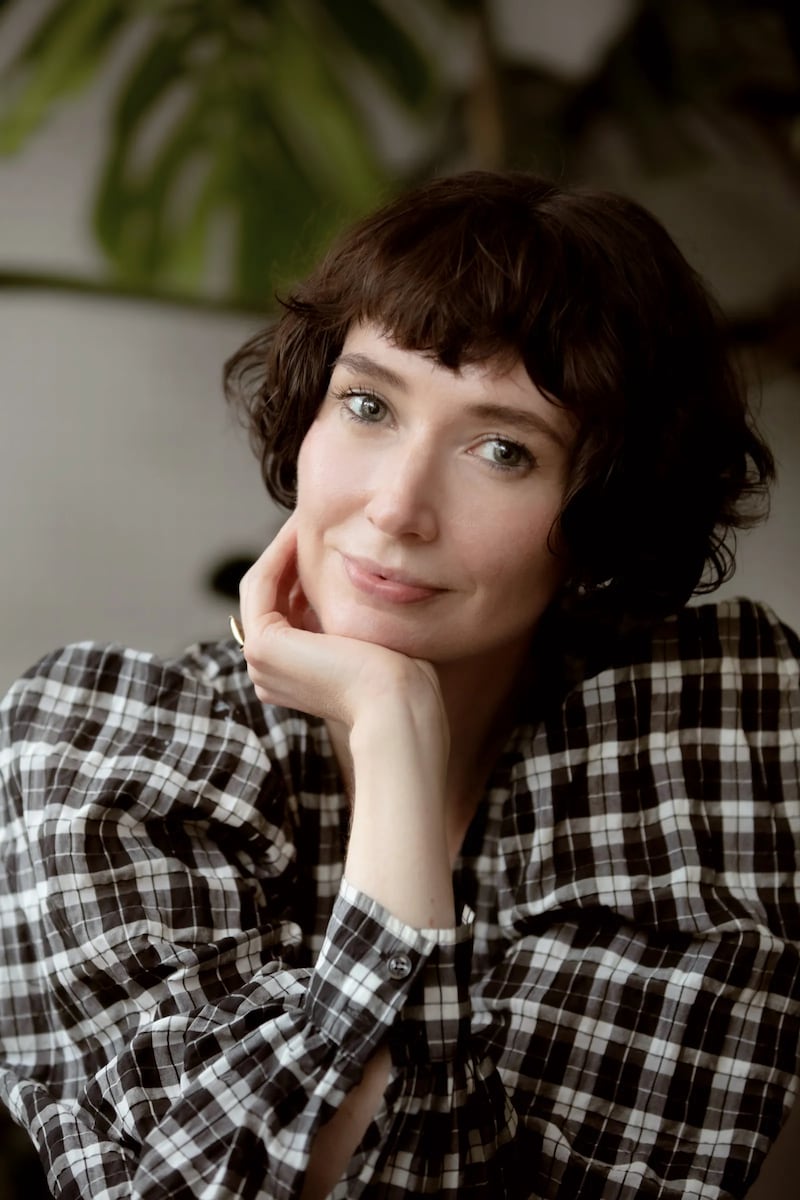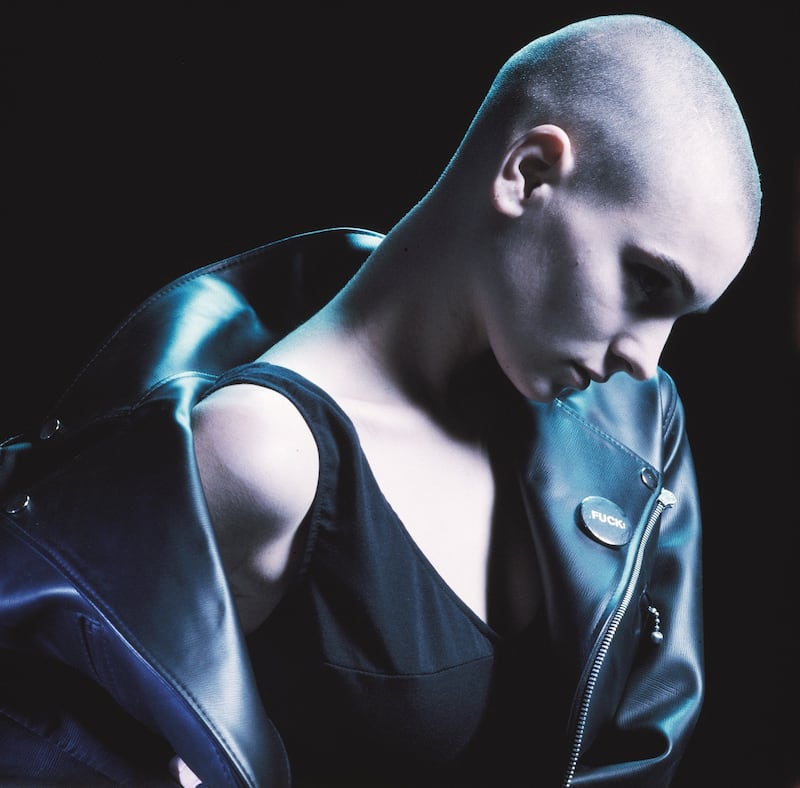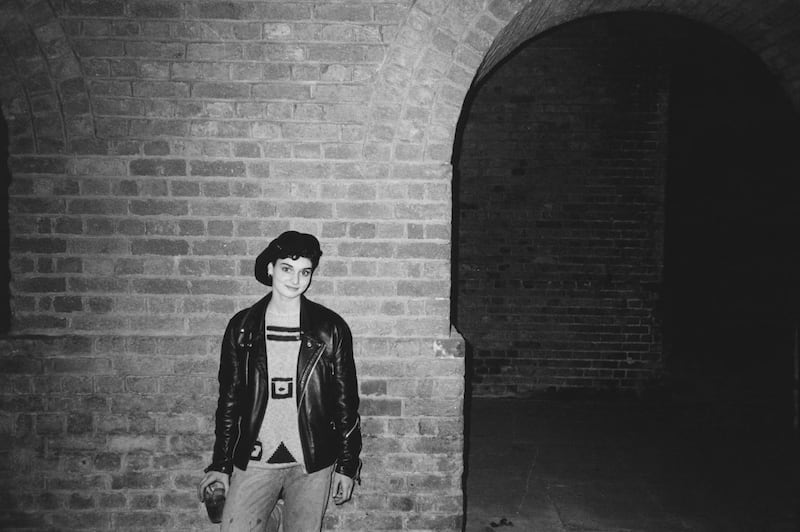There was a remarkable moment during the Irish premiere of Nothing Compares at the Galway Film Fleadh last July. When Kathryn Ferguson’s excellent study of Sinéad O’Connor reached the famous (infamous?) moment that saw her tear up a photograph of Pope John-Paul II on Saturday Night Live, the audience burst into spontaneous, whooping applause. Maybe they would have done the same 30 years ago. Maybe they would have booed. Who knows? But you couldn’t escape the suspicion the crowd was offering belated confirmation of O’Connor’s status as a proudly awkward national treasure. Was that reading too much into it?
“No, not at all,” Ferguson says. “I was so nervous that night — my God, the most nervous I’ve been. Just trying to read that room, It was such an interesting demographic, The youngest looked to be 12. The oldest could have been 98. It was such a cross-section of Ireland. And I think it was quite tense until that moment. It’s been interesting seeing what bits people react to. It just felt like such catharsis.”
Ferguson, a warm, drily funny Belfast woman, has built her film around that event. O’Connor had already established a reputation for stirring the ordure before she arrived on Saturday Night Live in 1992. Two years previously, she refused to allow the US national anthem to play in advance of her concerts — causing Frank Sinatra, with wearisome predictability, to threaten to “kick her in the ass”. She made remarks (later withdrawn) apparently supporting the IRA. But none of this prepared her for the extraordinary response to her ripping up the papal image and launching into a version of Bob Marley’s War on that strangely durable comedy show.

“It’s actually nearly 30 years to the week when she did that,” Ferguson tells me. “It was October 3rd, 1992. We’re at the anniversary. So it was a relief that that’s how everybody felt. So I have huge excitement it will be noisy when it goes on general release.”
It is still hard to credit the bizarreness of the reaction — particularly in the United States — to O’Connor’s protest. There were some four and a half thousand calls to broadcaster NBC. The following week on Saturday Night Live, Joe Pesci, in an opening monologue, remarked: ‘I would have gave [sic] her such a smack’. (What was it with Italian-American entertainers?) One week after that, at a Bob Dylan tribute, she was greeted with a volley of boos that responding cheers came nowhere near drowning out. The admirable Kris Kristofferson put his arm around her and, as Madison Square Garden continued to bellow, told her to not “let the b*****ds get you down”. O’Connor was robust enough to respond “I’m not down” before launching again into the Marley song. The Washington Times named her “the face of pure hatred”. Madonna mocked her. Piles of her CDs were crushed publicly in Times Square.
The closest comparison would be with the furore that, in the US, followed John Lennon’s argument that The Beatles were “bigger than Jesus”. That band could weather the storm. Nothing Compares argues that O’Connor’s career was halted in its tracks. She had emerged with the angular, unclassifiable album The Lion and the Cobra in 1987. I Do Not Want What I Haven’t Got, the follow-up, sold seven million copies and generated her era-defining cover of Prince’s Nothing Compares 2 U. Though she has continued to release fine records, she never again achieved that level of financial success.
She just felt like this alien that landed from outer space. For young women up and down the country, she was vital
I decide to mansplain my big theory. The reaction was largely an American thing. Right? Nobody much cared about her SNL iconoclasm in the UK or Ireland.
“Well, I was in my early teens in Belfast at the time,” she says pleasantly, but firmly. “It was certainly something that I noticed. If it wasn’t the act itself, it was the backlash. Everyone started to pick up on that. It was about that point I discovered her second album. I’d been introduced to her music through my father. I became a bona-fide fan, but then I was really demoralised as I witnessed what happened. The UK press wasn’t great.”
Well, no. I don’t suppose it was. They relished every opportunity to portray her as a loon.

“There were headlines like ‘Sinéad the She-Devil’. There was even a ‘Burn the witch’ one. You got ‘holy terror’. Just absurd headlines, really. If the act wasn’t so shocking, the backlash effectively felt like a cancelling of her career.”
Nothing Compares focuses most closely on the five-year period that took O’Connor from alt-success with The Lion and the Cobra through A-grade stardom with Nothing Compares 2 U and on to retrenchment after the SNL incident. But it inevitably gathers in the wider story. So many key social concerns are touched upon that it feels like an allegorical social history of the State as it crashed into delayed, millennial maturity.
The film details the discomfort and suffering she endured there but also notes how an inspirational guitar teacher helped develop her musical gifts
Raised in middle-class South Dublin, O’Connor discussed her troubled childhood throughout her career before laying out the grim details plainly in her 2021 memoir Rememberings. “My mother lost custody of us because the day my father left her, she put us to stay in a hut he’d built us in the garden,” she wrote. “Once he’d gone, we started crying. She said if we loved him so much, we could go live in the hut. I knelt on the ground in front of the gable wall and wailed up to the landing window to get her to let us into the house when it got dark.” That incident is recalled strikingly in Nothing Compares. She seems to have been processing it ever since. “That is when I officially lost my mind and also became afraid of the size of the sky,” she continued in Rememberings.

Habitual truancy and a taste for shoplifting eventually led to a spell of 18 months in a Magdalene asylum. The film details the discomfort and suffering she endured there but also notes how an inspirational guitar teacher helped develop her musical gifts. She recorded a song with the indestructible In Tua Nua, but, still 15, she was too young to formally join the band. Her association with Fachtna Ó Ceallaigh, once chief of U2′s record label, led to work with the Edge and, eventually, the recording of The Lion and the Cobra. Music was less obsessed with genres then, but there was still some bafflement as to where to place the thing. It had a hardish rock edge. But there was also a strong pop sensibility. What held it together was O’Connor’s uniquely odd vocals — sweeping from lyrical softness to that astringent raptor squawk. It hardly mattered that the critics struggled to classify the record. Audiences immediately connected with the emotional rawness.
[ Sinéad O’Connor: ‘Nobody wants females running the world’Opens in new window ]
“As I said, it was my father, Sean, who got me really into her with The Lion and the Cobra in late 1980s Belfast,” Ferguson says. “He just used to play it on repeat as we were driving through miserable rainy Northern Ireland — through all the bomb scares on a Saturday. All that awfulness. Her music really was the soundtrack to my childhood. I was just so excited by her and what she stood for. She just felt like this alien that landed from outer space. For young women up and down the country, she was vital.”
Her look was important. It still seems surprising that, after punk and the New Romantic madness, so many were taken aback by her shaved head. But, sure enough, interviewers reacted to the shiny dome as if she’d peeled away the skin itself. Nothing Compares features several snippets of chatshow hosts treating her like an example of a terrifying new species. The interactions with Gay Byrne on The Late, Late Show now seem uncomfortable. He is always kind to her, but it’s hard to imagine him pulling this sotto voce, hyper-avuncular act on Bob Geldof or Ronan Keating.
She is in a superstar pop space and everyone thinks she should be more amenable than she actually is
“It seems they had a close relationship,” Ferguson says. “There was a fatherly and daughterly thing going on. But when you see it through this contemporary lens, he’s wildly patronising. It’s really cringeworthy when you actually see that. But you could have watched any talkshow host of that era and I bet your boots they all would have been similar. What does change is that she starts off shy and awestricken. She becomes more and more sure of herself. She won’t take any nonsense from him. But, yeah, it’s not great.”
There is no escaping the conclusion that sexism was to blame for a lot of the antagonism that came her way. She had children with music producer John Reynolds, journalist John Waters and musician Donal Lunny. In the late 1990s, she was ordained as a priest in the “Irish Orthodox Catholic and Apostolic Church” and, in one of several name changes, asked to be addressed as Mother Bernadette Mary. She has since called herself Magda Davitt and, following conversion to Islam in 2018, Shuhada’ Sadaqat. All predictable tabloid fodder. But male rock stars are allowed to express their individuality without similar barrages of disdain. There was real relish in the endless ridicule.

“Well, yeah, there was a very heavy dose of sexism for sure,” Ferguson says. “But I do think a lot of it with Sinéad was that she was a counterculture artist catapulted into this superstar realm — which she doesn’t sit comfortably in. She won’t play the game. She’s not grateful for having this fame. She’s pushing back against all the things that are expected of her. She is in a superstar pop space and everyone thinks she should be more amenable than she actually is.”
After all that, it is, perhaps, faintly surprising that O’Connor agreed to participate in Nothing Compares. The film is composed almost entirely of ingeniously arranged archival footage. There are no distracting contemporary talking heads. But we do hear a new interview with Sinéad beneath the unspooling story of art, anger and tumult. After studying at Central Saint Martins and the Royal College of Art in London, Ferguson went on to make Taking the Water, a lovely short film about an 80-year-old tidal pool in Margate, and Space to Be for the Guardian. She first worked with O’Connor on the video for her song 4th and Vine.
“She was very willing to give us an interview,” Ferguson says. “So I think that that said it all. We had her blessing. She very happily took part in the interview. It wasn’t a biopic. So we weren’t asking very much from her — which I think is probably a reason why it happened. And it was clear what our thesis was from the start. So I think all of those things certainly helped.”
We do, however, need to discuss a ghost that’s not at the feast. The film is called Nothing Compares. That refers to O’Connor’s moment of commercial apotheosis. Her version of Nothing Compares 2 U remains an unavoidable soundtrack to the millennial years. John Maybury’s video, during which a tear crawls down her screen-filling face, is among the most celebrated works in the medium. Yet the song is not in the film. It seems that Prince’s estate refused the rights. O’Connor did tell some eye-opening stories about the late musician in Rememberings. She claims that, during a meeting at his mansion, he told her off for swearing, insisted his butler serve her soup she didn’t want and tried to start a pillow fight. She goes on to say Prince then stalked her in his car. But there could be any number of reasons why they balked at allowing the song to be included.
She’s back like a phoenix from the flames
“We sadly found out quite late in the day that the licensing had been denied,” Ferguson says. “And it is, of course, their prerogative to not licence the song. We didn’t get a huge amount of reason. It was a huge shock to us.”
I can’t say it damages the film in any serious way.
“I suppose it did create a huge creative challenge for us very late in the day,” she says. “That section in the film was, of course, of utmost importance. It was actually the kind of climax to the narrative of the film. Because we had secured the rushes to the music video — which were beautiful and astounding. And in that part of the film, we are revisiting the relationship with her mother again.”
Nothing Compares has already had a busy life. At the start of the year it premiered to strong reviews at the hugely influential Sundance Film Festival. “In terms of the fame by which the pop stratosphere defines itself, Sinéad O’Connor was a fire that went out too fast,” Variety wrote. “Nothing Compares makes you see it’s still burning.” Ferguson, who recently visited New York, echoes that feeling.
“We were really excited last week to see the poster from the film with her big, beautiful face in Times Square,” she practically gurgles. “A huge, big screen of her. And the last time, I’m nearly positive, that her image would have been in Times Square would have been when they were steamrolling over her records — after October 3rd, 1992. That felt like such a profound moment. She’s back like a phoenix from the flames.”
Clearly that Irish premiere at Galway had a particular importance for Ferguson. Following the publication of Rememberings, there was a sense of the country collectively apologising to someone who had been greatly wronged. Sympathy following the tragic death of her son Shane earlier this year further confirmed that affection. Ferguson notes that, following the referendum on marriage equality, it really felt like the right time to hear from O’Connor again. In the decades after the Saturday Night Live incident, we were bombarded with increasingly infuriating tales of the Church’s sluggish response to cases of sexual abuse. Sinéad O’Connor was merely saying what millions have said since. Is she in danger of becoming an icon?
“I think she deserves all that, to be honest,” Ferguson says. “I just think it’s so overdue and she’s been treated horrifically. And I just think it couldn’t come soon enough. It’s just a dire shame it’s taken this long.”
Nothing Compares is released on October 7th

















